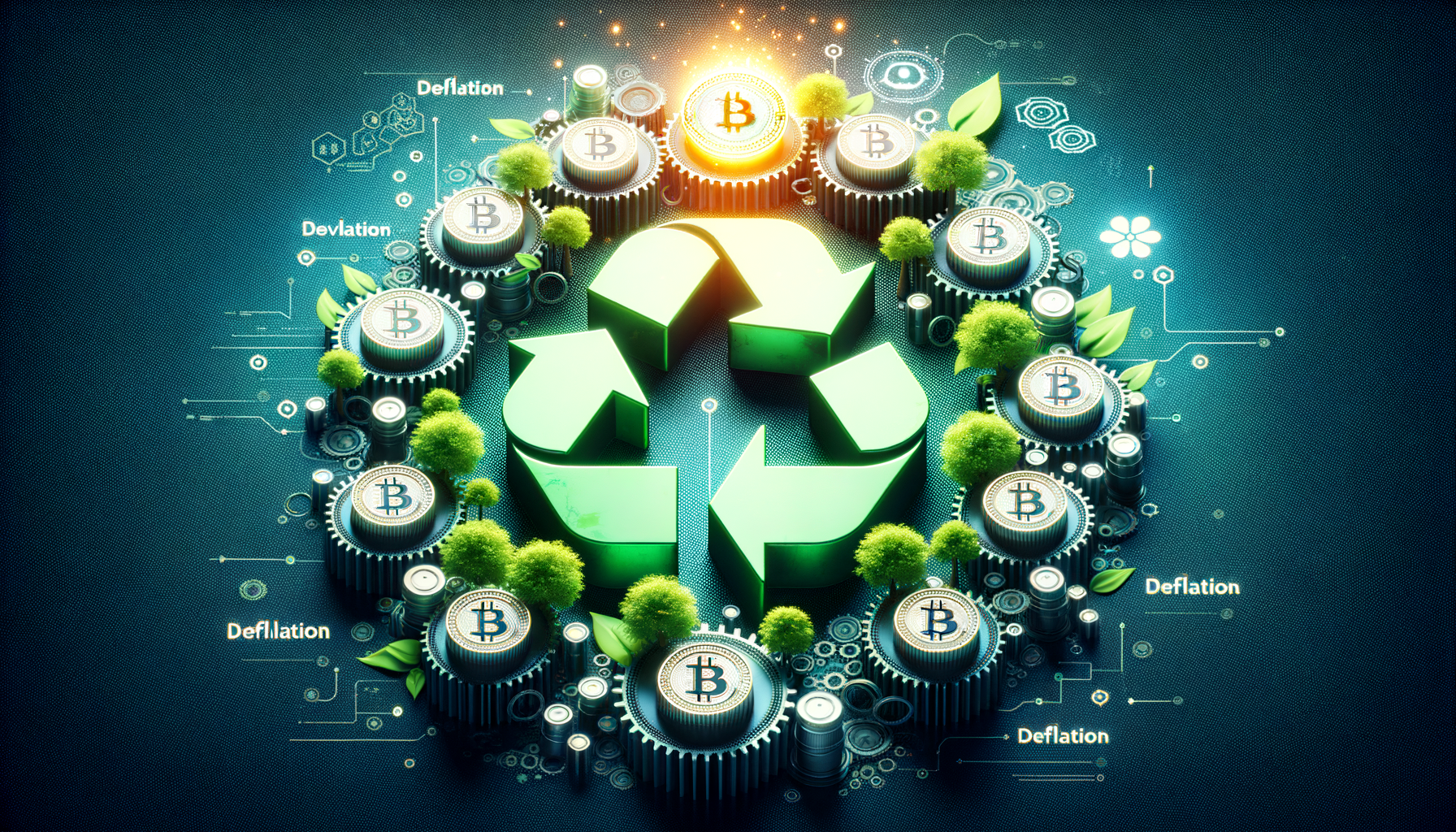Driving Deflation Through Utility, Not Just Hype
In an era dominated by speculative trading, viral hype, and meme-fueled momentum, the cryptocurrency world often forgets the core principle that drives long-term value and user retention: utility. While hype may spark interest and short-term pumps, it’s sustained real-world use that carves out truly valuable digital assets from the sea of fleeting tokens. Today, we’re going to explore how deflation driven by actual use—rather than hype—creates stronger, more sustainable digital ecosystems.
Why Deflation Alone Isn’t Enough
It’s common knowledge among crypto veterans that scarcity can drive value. Bitcoin’s capped supply of 21 million is the textbook case. But simply reducing supply doesn’t automatically create value—demand still matters. True deflationary strength emerges when a token is consistently used in meaningful ways and its supply is programmatically reduced over time.
Token deflation without utility becomes little more than marketing. What's the point of reducing a token's supply if no one wants to use it in the first place?
Deflation Through Utility: A Smarter Model
To build lasting value, Web3 projects must stop relying purely on market psychology and instead offer ecosystems that drive frequent, purposeful token engagement. Let’s break down how this works:
- Sinks Before Scarcity: Tokens must have “sinks”—places where they are actively used or spent within platforms or services.
- Programmatic Reductions: Scheduled burns, treasury-funded buybacks, or utility-based removal of tokens from circulation all contribute to a decreasing supply.
- Value-Layer Utility: When a token unlocks real features, software access, or community benefits, it becomes useful, not just tradable.
In other words: use, then reduce. That’s the loop good deflationary mechanics should follow.
Case Study: How LoopCoin Designs Deflation Utility-First
The emerging project LoopCoin ($LPC) offers a textbook example of deflation through utility. While many tokens advertise themselves as deflationary, few integrate real-world usage to create consistent demand. LoopCoin takes a fundamentally different route:
- Micro Transaction Fee: A 0.05% fee applies to every transaction, feeding a transparent treasury.
- Weekly Buybacks and Burns: That treasury then buys $LPC on open markets and burns the tokens—permanently removing them from circulation.
- Fixed, Shrinking Supply: From 1 billion down to 25 million tokens—mirroring the scarcity of Bitcoin but with active ecosystem demand.
But what drives that demand? Utility. LoopCoin isn’t just a token to collect—it powers a growing network of specialized crypto tools, including MemecoinAlerts, a site providing premium alerts to community members. To unlock alerts and trading data, users must hold LPC, injecting ongoing, non-speculative demand into the ecosystem.
LoopCoin Value Loop = Use → Buyback → Burn → Scarcity
Each step feeds the next:
- Traders buy LPC to access premium services.
- The community spends and transfers tokens, triggering the 0.05% fee.
- The treasury gains revenue from fees.
- Weekly buybacks pull supply from the market.
- Burns permanently decrease total tokens in circulation.
That’s the Loop.
This system is engineered to scale sustainably. Even as the active supply dwindles, usage of services like MemecoinAlerts drives continual buying pressure, benefiting holders and utility users alike.
How to Evaluate Deflationary Ecosystems Accurately
If you’re exploring deflationary tokens as part of your crypto strategy, go beyond tokenomics and flashy graphics. Ask the tough questions:
- What is the real reason to use the token?
- Is the burn mechanism sustainable and transparent?
- How often is the token used in everyday ecosystem interactions?
- Is the decreased supply balanced by increased or sticky demand?
Hype may hide weak economics, but utility doesn’t lie. If people are using a token because it unlocks real value, then that’s a positive signal—especially if the mechanics also decrease supply over time.
Putting It All Together
In a market overflowing with projects chasing pumps, it’s refreshingly valuable to find projects building real economies, not echo chambers. Deflation is powerful but only when it's built on a foundation of demand. As users and builders, we must champion ecosystems that prioritize ongoing utility to power long-term value, not just viral momentum.
If you’re interested in exploring this model in action, consider checking out LoopCoin. Join the Telegram community to learn more at t.me/theloopcoin or track live data on their DexScreener page.
Remember, not all deflationary tokens are created equal—some are hyped, others are used. Choose the ones that actually loop back into utility.
Trade. Earn. Burn. That’s the Loop.
Disclaimer:
This content is provided for general informational and educational purposes only. It does not constitute financial, investment, legal, or tax advice, and should not be interpreted as a recommendation to buy, sell, or hold any digital asset, including LoopCoin ($LPC).
LoopCoin is a utility token intended to be used within its ecosystem to access services and platforms. It is not a security, and we make no claims, promises, or guarantees regarding its future value, performance, or appreciation.
All token-related mechanisms such as burning, treasury allocations, or buybacks are programmatic features of the LoopCoin ecosystem, designed to enhance utility—not promises of profit.
You are solely responsible for your interactions with digital assets. Please consult with a qualified professional before making any decisions involving cryptocurrency. Use of this website and its content is subject to our Terms of Use and Privacy Policy.


